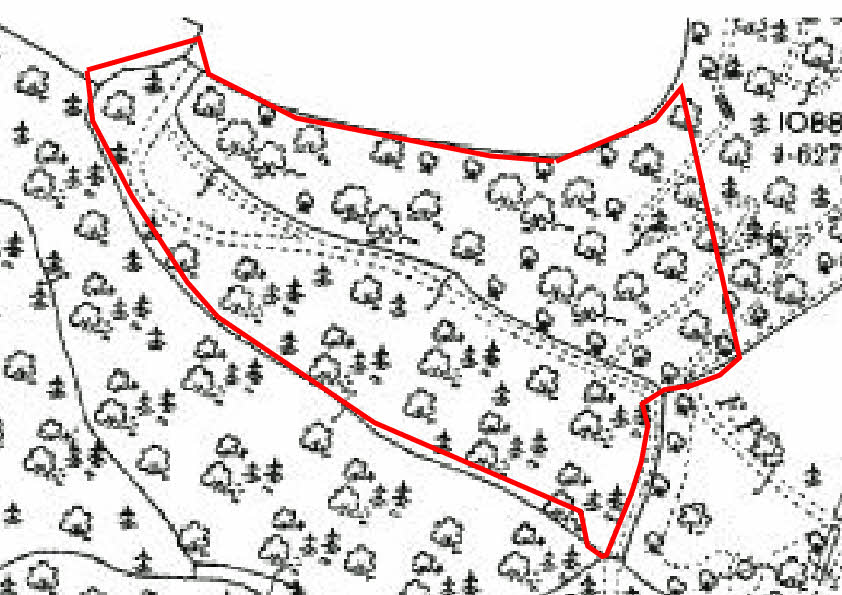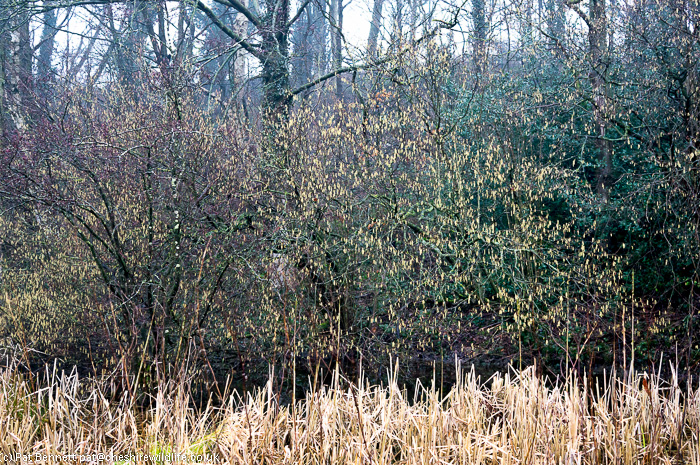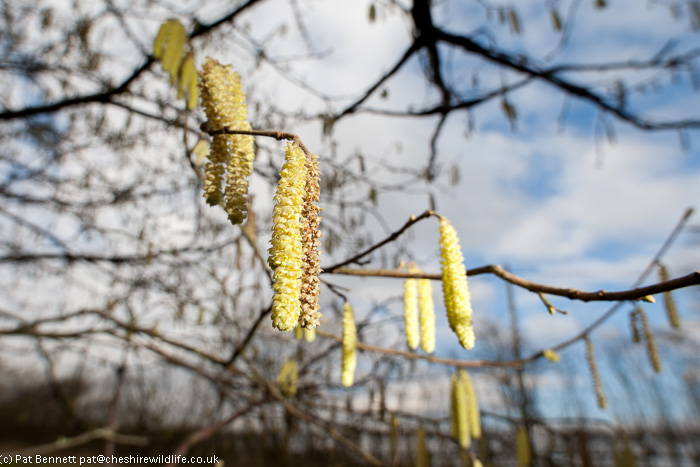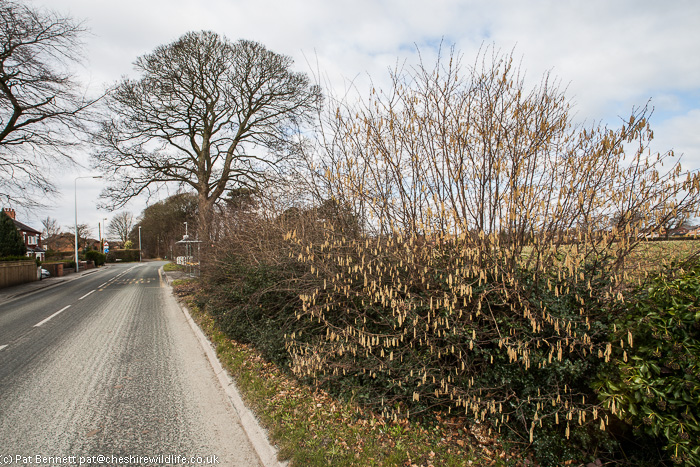Along the bottom of my garden is a hawthorn hedge. Over the years it has varied between three and eight feet tall as my enthusiasm for hedge trimming waxed and waned, but I have always kept a sharp eye open for newcomers in the hedge. After over forty years, there are now two trees standing above the thorns – a holly and a hazel.
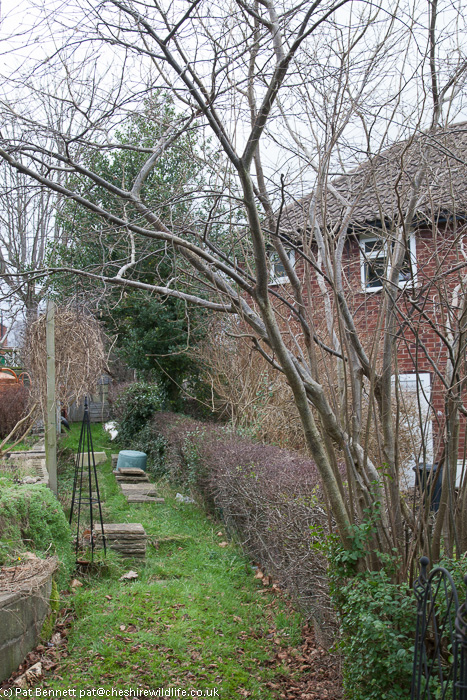 The holly is in danger. I have been struck by how often the gardens of older people become dark and dreary. Trees and the larger shrubs escape upwards when the ability of their owners to keep them in order wanes as the years go by. I am determined that my garden shall not suffer this fate, and I have already felled the two conifers which were darkening one corner. The holly in the hedge is bolting upwards, straight as a die, and I think that it may have to be reined in very soon.
The holly is in danger. I have been struck by how often the gardens of older people become dark and dreary. Trees and the larger shrubs escape upwards when the ability of their owners to keep them in order wanes as the years go by. I am determined that my garden shall not suffer this fate, and I have already felled the two conifers which were darkening one corner. The holly in the hedge is bolting upwards, straight as a die, and I think that it may have to be reined in very soon.
However, the hazel is safe. After all, it will only grow to 20-30 feet, and it will be easy to keep it under control by coppicing it – this involves cutting the trunk just above ground, with the result that, like dragon’s teeth, lots more stems appear to replace it. In fact, the continual pruning during hedge clipping, before I noticed it there, has already stimulated lots of new shoots.
In the autumn of 2011, a few years after letting the hazel have its head, it produced its first serious crop of nuts. I love nuts, so I collected every one I could find, and my tasty stash lasted several months. Last year, I looked forward to another hazel nut bonanza, but it didn’t happen. I could hardly believe it when an extensive search of the tree produced only a single nut. My sense of nut entitlement was outraged! What could have happened?
The first thought was that maybe this should have been expected – so many nut producing trees have good years and bad years, and why should my hazel be any different? My second thought involved the non-appearance of my daughter’s pears this year and the likelihood that the pollination of her trees and my hazel were both affected by the interminable rain last spring. Another, rather outlandish, theory took shape when reading about hazel reproduction – like many others, all hazel trees carry both male and female flowers. The male flowers are the catkins, dancing in the early sprng breeze as they shed their pollen.
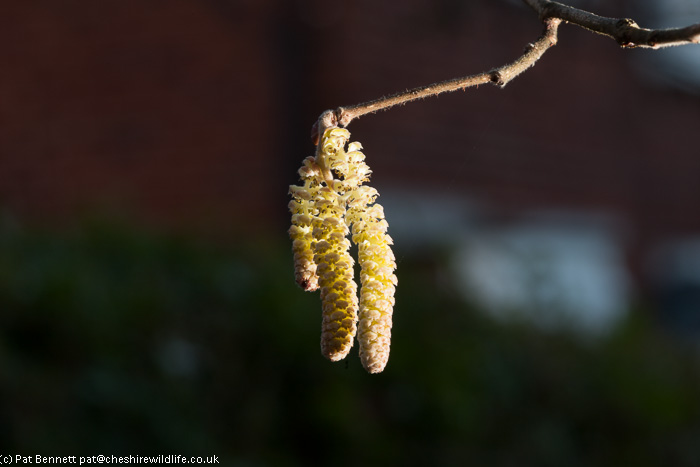
The female flowers are much less obvious, consisting of what looks like a leaf bud with the crimson styles – the female bit that catches the pollen – protruding.
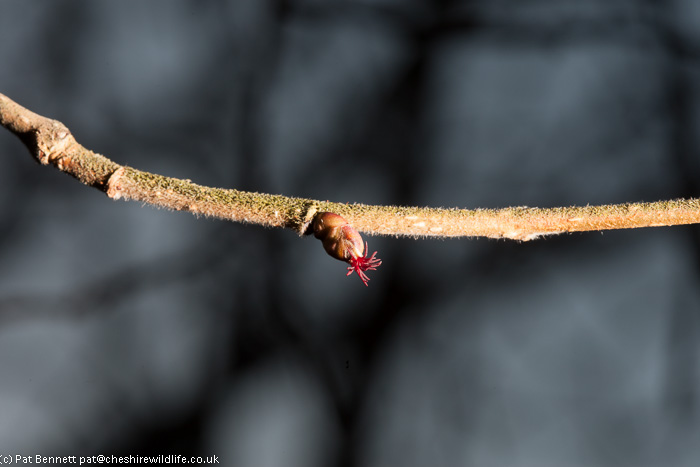
The outlandish theory appeared when, reading about hazel, I found that the catkins on a tree cannot fertilize its own female flowers. I don’t know the exact details for hazel, but the simplest scheme would be for the catkins to release their pollen before the female flowers open. So the theory goes that my crop of nuts resulted from pollen from another local hazel tree – and it has been cut down, with no other hazel within pollen range. Hmm.
Outlandish or not, it sealed the fate of the conifers in the opposite corner of the garden. Down they came, and I had decided to replace them with a couple of hazel trees which I would coppice when they were large enough to cast too much unpleasant shade. Then I noticed that, under the hedge behind my compost bins, there were about a dozen hazel seedlings – obviously, I had not managed to find every one of my hazel nuts! 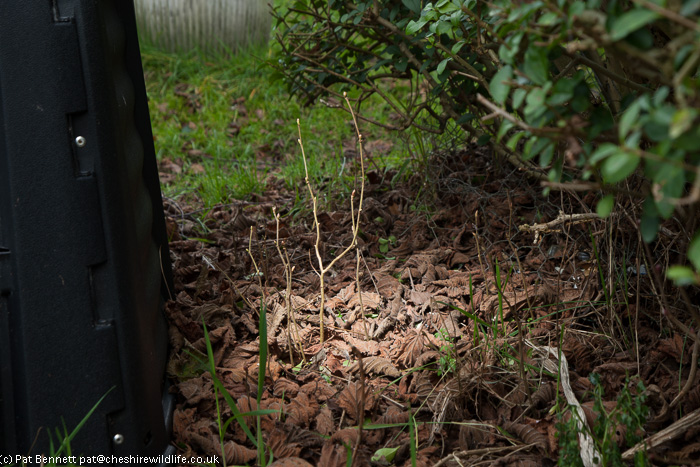
I dug up two of them and moved them to the opposite corner where they look rather forlorn in the large empty space vacated by the conifers.

Another theory involves grey squirrels, and arose from my reading about woodland management. They are not regular visitors to our garden, so we do not have the continual battle, that so many people have, to prevent the theft of food from their bird feeders. However, we get the occasional visitor that gets chased away as soon as it is spotted, and causes us and our birds no concern.

Recently, I have been reading Oliver Rackham’s book in the New Naturalist series called “Woodlands”. This is a scholarly book, displaying a fascinating breadth of knowledge about the subject, including the history of woodland, our understanding of the life of trees, present problems and recommendations for the future management of our woods and forests. I was struck by a passage which read:
“Hazel has fared badly. Grey squirrels have taken away its means of reproduction. Usually all the nuts have disappeared by August while they are still green and unviable, and a young hazel is a rarity. Hazel is thus a threatened species, although its longevity will see it through some centuries to come.”
Could it be that a grey squirrel cleared our hazel’s nuts unnoticed? I doubt this, because I did not notice any debris on the ground, but now I know another reason why I will not tolerate them in my garden.
Since becoming aware of Rackham’s revelation, I have been looking for young hazel in my local woods, and I am struck by the rarity of hazel of any age. So far, I have only found one old specimen beside the riverside path – no seedlings anywhere near it. I shall be keeping a sharp lookout for them over the next few weeks – they’ll be easier to spot when their catkins are waving in the breeze.
 One of the foothills rising from the shore of the estuary on the other side is topped by several fields surrounded by woodland. In the valley to the south of the hill, a small river runs down to the sea, past the ruins of a great house called the Downing, built in 1626, in which the writer and traveller, Thomas Pennant, was born and lived. The side of the hill which faced the mansion, cloaked in its ancient woodland, is creased by a couple of small valleys, one of which contains Coed Mostyn, ours since April 2013.
One of the foothills rising from the shore of the estuary on the other side is topped by several fields surrounded by woodland. In the valley to the south of the hill, a small river runs down to the sea, past the ruins of a great house called the Downing, built in 1626, in which the writer and traveller, Thomas Pennant, was born and lived. The side of the hill which faced the mansion, cloaked in its ancient woodland, is creased by a couple of small valleys, one of which contains Coed Mostyn, ours since April 2013.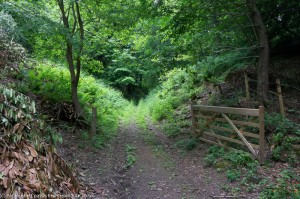 Access is through a gate at the southwestern end of the track running the length of the wood, and at this point the track is at the bottom of a steep-sided valley. About half way up, the track levels out and enters a level glade on its left near the top.
Access is through a gate at the southwestern end of the track running the length of the wood, and at this point the track is at the bottom of a steep-sided valley. About half way up, the track levels out and enters a level glade on its left near the top.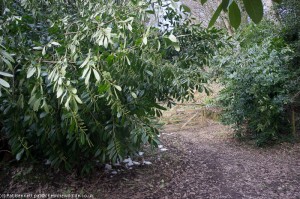 emerge through and above it have no chance of reproducing themselves in its dense shade. On taking over the wood, the first task was to clear several laurel trees which had been brought down by the weight of snow in March, and were sprawling over the paths. The laurel will have to go!
emerge through and above it have no chance of reproducing themselves in its dense shade. On taking over the wood, the first task was to clear several laurel trees which had been brought down by the weight of snow in March, and were sprawling over the paths. The laurel will have to go!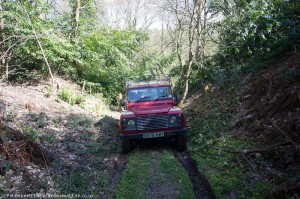 The second problem appeared when we got the keys and drove through the gate in the Landrover. A few yards up the steep track, and we came to a halt with the wheels turning ineffectually. The ruts in the track is the drainage path for the wooded valley, and they were filled with a soft damp mud which gave very little traction. The track will need a lot of work to make it driveable, and this is important because we need to get up to the level glade at the top of the valley.
The second problem appeared when we got the keys and drove through the gate in the Landrover. A few yards up the steep track, and we came to a halt with the wheels turning ineffectually. The ruts in the track is the drainage path for the wooded valley, and they were filled with a soft damp mud which gave very little traction. The track will need a lot of work to make it driveable, and this is important because we need to get up to the level glade at the top of the valley.